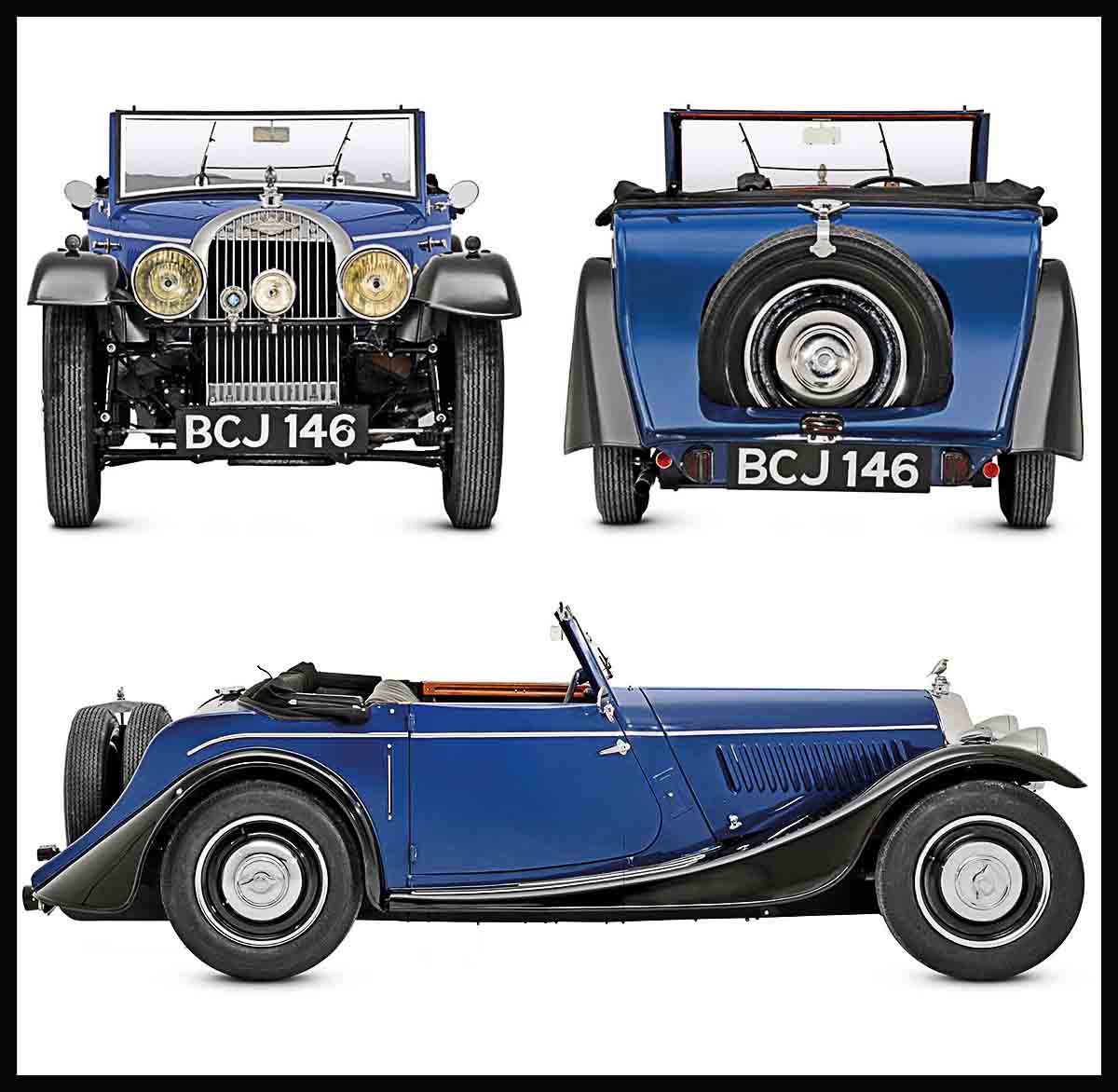
Pre-War Automobile Designs
During World War II car-makers turned their mass-production expertise over to manufacturing essentials for the war effort, producing everything from tin hats to fighter planes and tanks. After the war the factories had to be reorganized and retooled, and returning them to their prewar levels of car production took time. The simplest and quickest way for companies to do that was to reintroduce the models built in the late 1930s—occasionally with some mild updates. Some of these cars, or the engines and running gear underpinning them, would soldier on in restyled models for years to come.
Morgan 4/4 1938
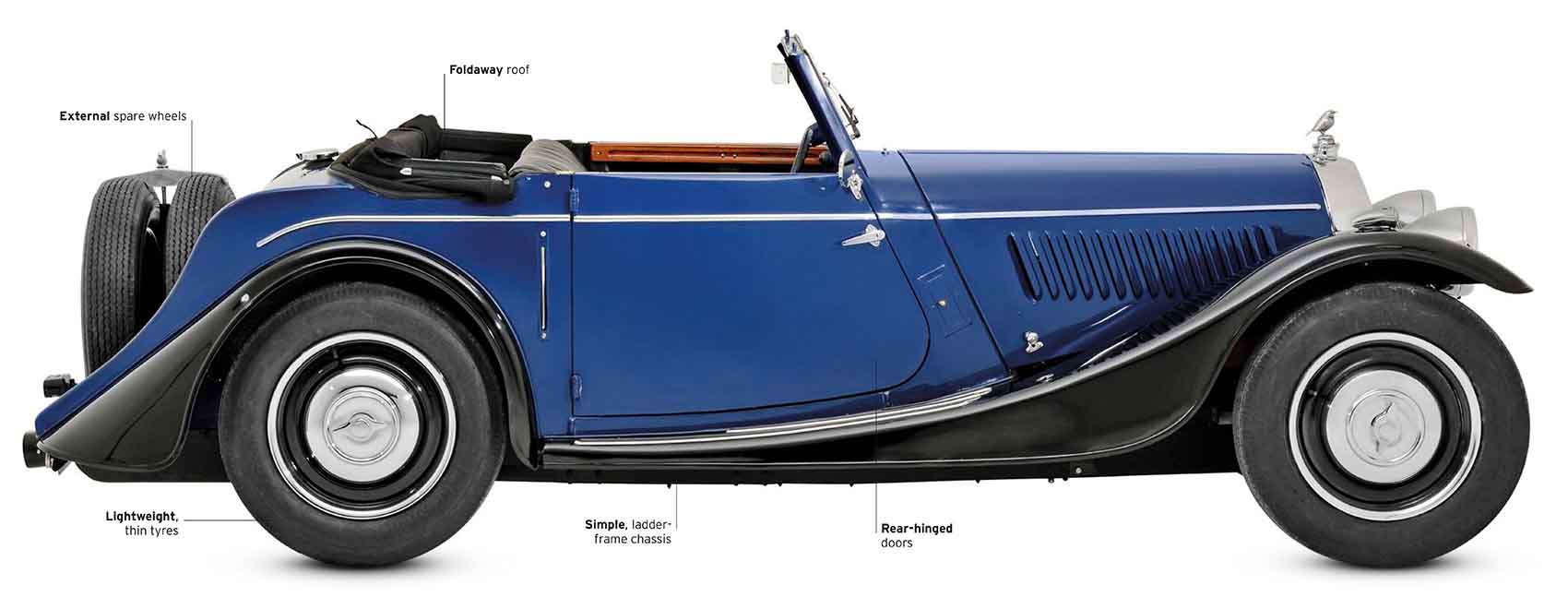
| Origin | UK |
| Engine | 1,122 cc, straight-four |
| Top speed | 80 mph (129 km/h) |
After 27 years of building three-wheeled vehicles, Morgan launched its first four-wheeler in 1936—the 4/4. This entry-level sports car was reintroduced in 1946, by which time the Coventry-Climax engine had been swapped for a Standard unit. In 1955 a 1,172cc Ford engine was introduced. Morgan still makes a 4/4 today.
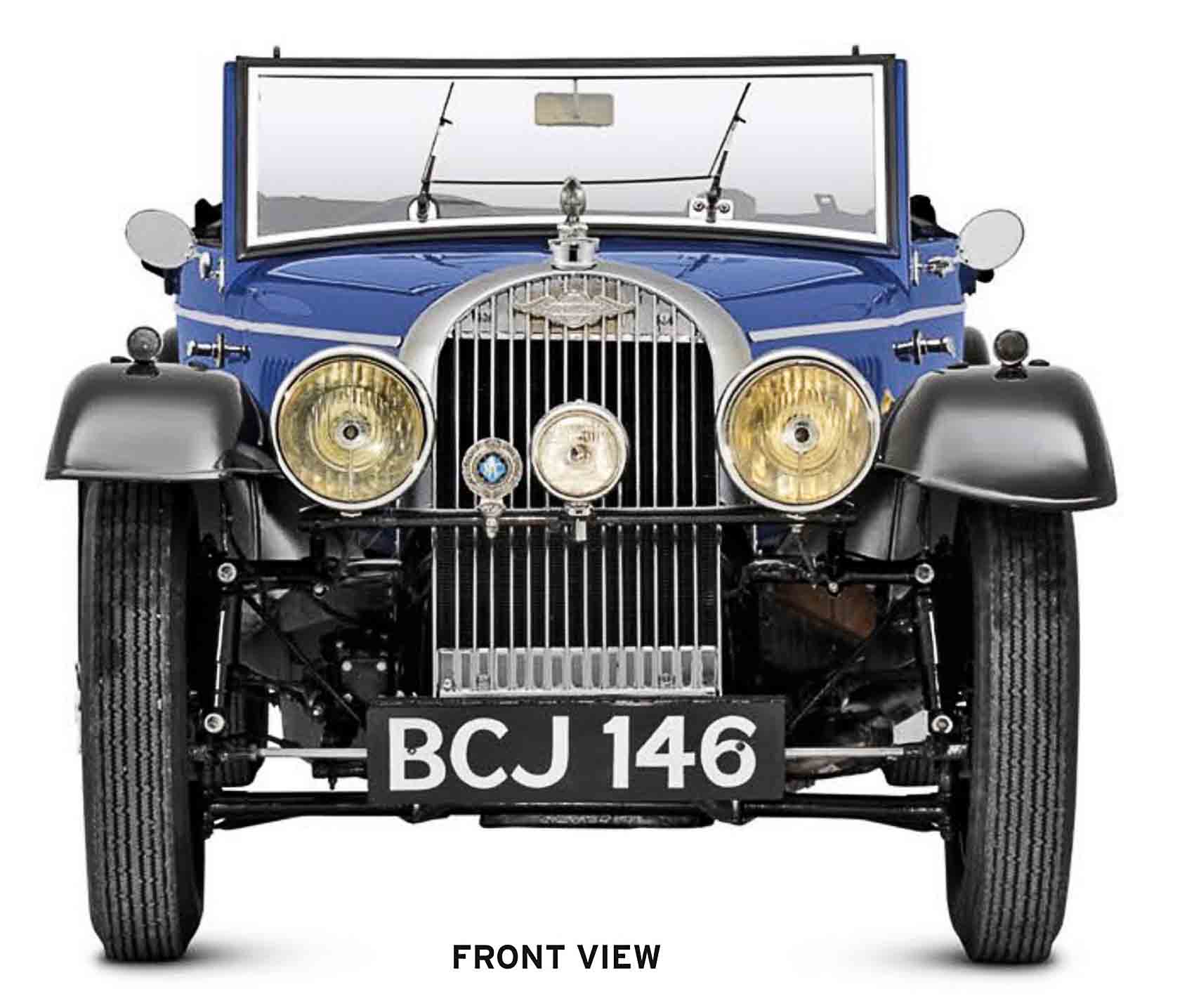
FRONT VIEW
Flat face
The Morgan three-wheelers usually hid behind their big, exposed air-cooled, V-twin engines, which were mounted at the front of the car, but the 4/4’s engine was fitted under a conventional bonnet, fronted by this flat radiator grille.
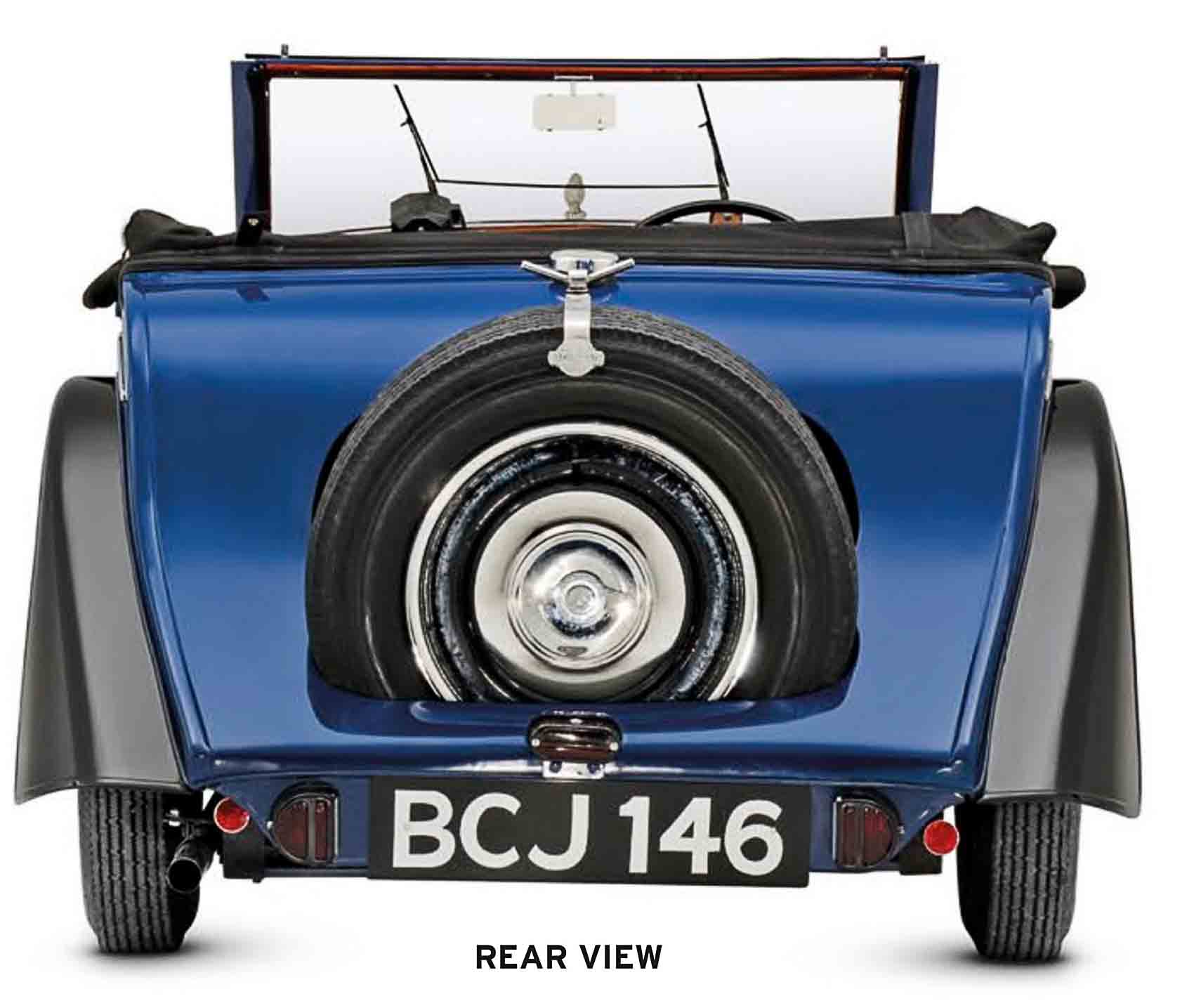
REAR VIEW
Desirable drophead
Morgan built the 4/4 as an open two-seater, a four-seater, or this drophead coupe. The Drophead offered a higher standard of weather protection and a better class of luxury than the other cars, but only 41 were built.
Peugeot 402 1935
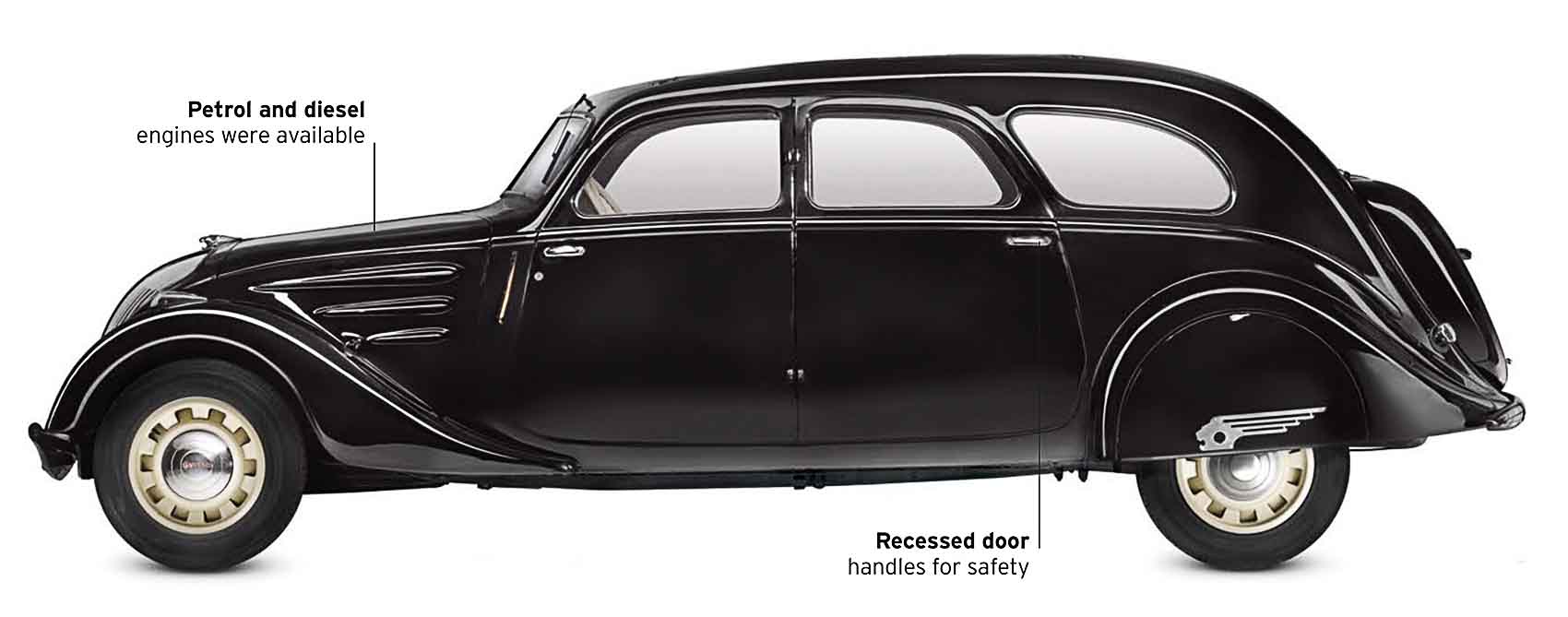
| Origin | France |
| Engine | 1,991 cc, straight-four |
| Top speed | 75 mph (121 km/h) |
The 402 was far more successful than most streamlined cars of the 1930s, mainly due to its low price—75,000 were sold. Retaining a separate chassis allowed Peugeot to offer 16 body styles. It was still produced during the war, particularly in van and utility versions.
Vauxhall H-type Ten-Four 1937
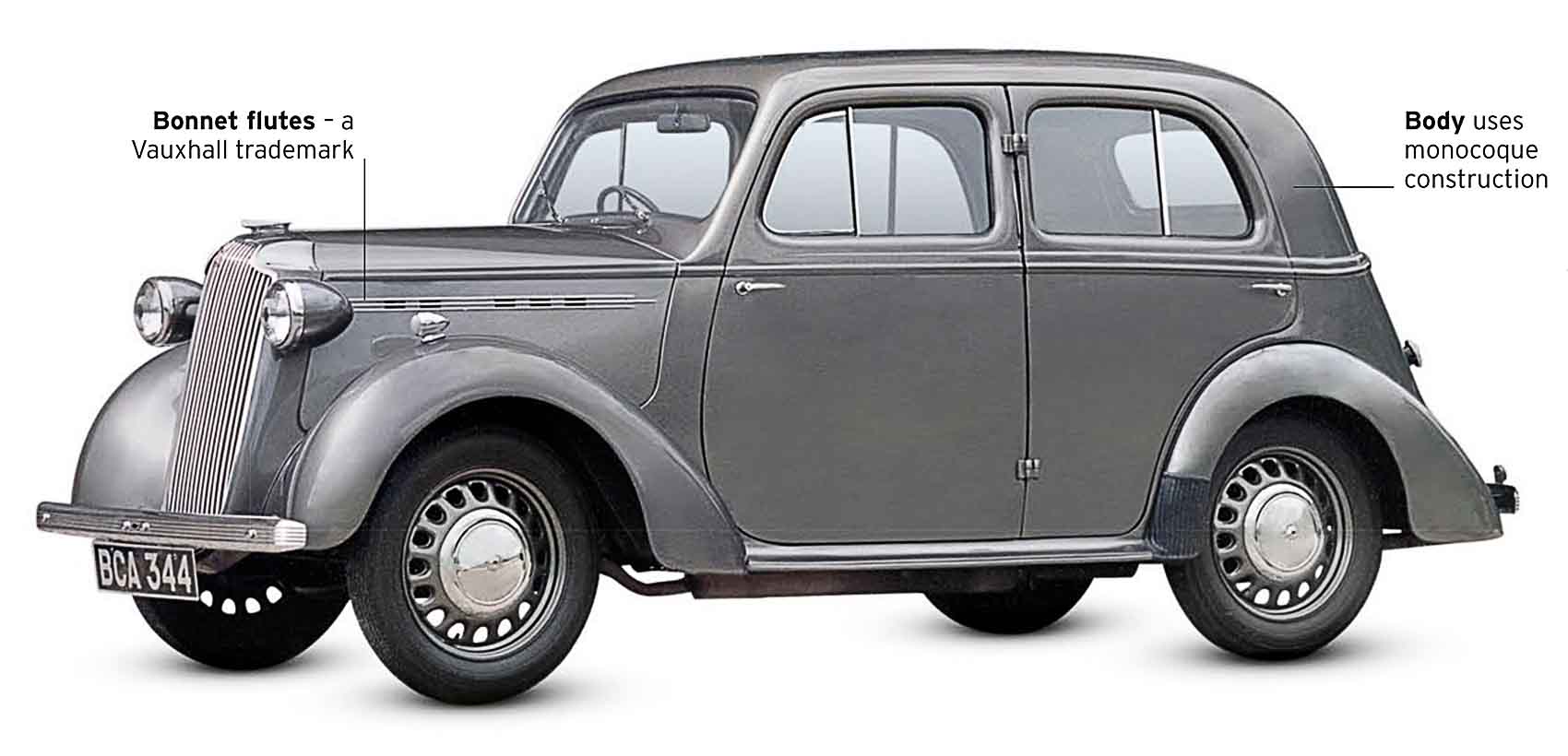
| Origin | UK |
| Engine | 1,203 cc, straight-four |
| Top speed | 60 mph (96 km/h) |
Vauxhall’s entry-level car was a little bigger than its rivals and boasted a unitary construction body, independent front suspension, and hydraulic brakes. A new grille was the most noticeable change when it reappeared in 1946, but it barely lasted a year as Vauxhall’s focus turned to larger cars.
Lancia Aprilia 1937
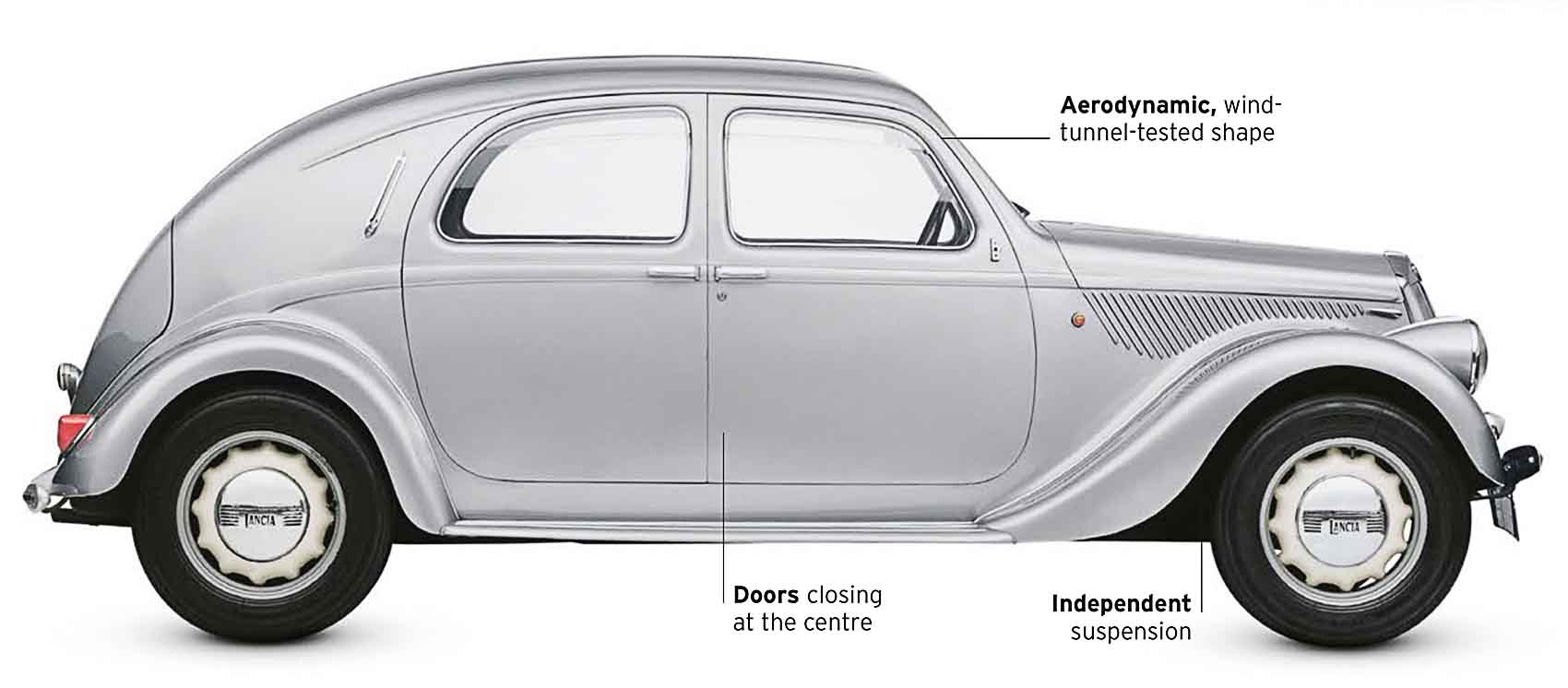
| Origin | Italy |
| Engine | 1,352 cc, V4 |
| Top speed | 80 mph (129 km/h) |
Probably the most advanced prewar saloon, the monocoque Aprilia had all-independent suspension, a narrow-angle V4 engine with overhead cam, hydraulic brakes, and pillarless doors. A larger 1,486cc engine was introduced in 1939 and retained after the war. The Aprilia continued until 1949 with more than 27,000 built.
Ford Prefect E93A 1938
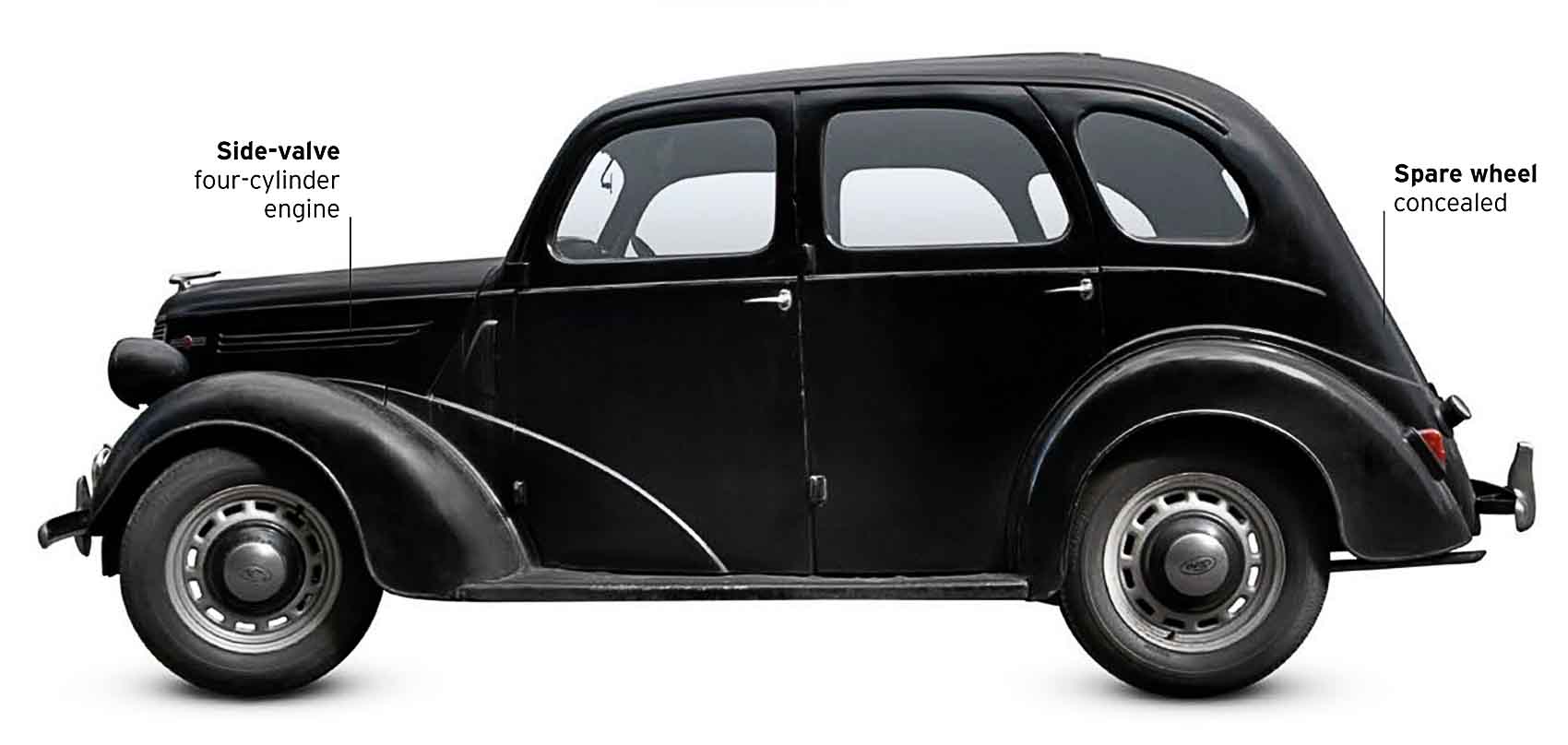
| Origin | UK |
| Engine | 1,172 cc, straight-four |
| Top speed | 60 mph (96 km/h) |
Descended from the 1932 Model Y, and big brother to the Anglia EO4A, the Prefect had an all-new body and larger engine. Reintroduced in 1949 as the E439A, with headlights moved to the wings, it was the cheapest four-door car in the UK.
It is a quote. The Classic Car Book – The Definitive Visual History 2016




